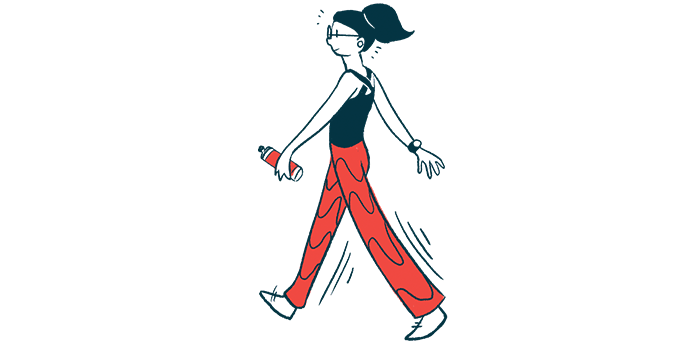At-home Digital Cameras Monitor Gait, May Speed Diagnosis
Diagnostic tool assesses walking in real-world setting

Researchers have developed a software that can accurately identify people with Parkinson’s disease or multiple sclerosis (MS) from healthy controls based solely on their gait.
The software, which analyzes gait video data collected at patients’ homes using simple digital cameras, may provide an inexpensive tool to identify and speed the diagnosis of diseases like Parkinson’s.
The study, “A Vision-Based Framework for Predicting Multiple Sclerosis and Parkinson’s Disease Gait Dysfunctions – A Deep Learning Approach,” was published in the IEEE Journal of Biomedical and Health Informatics.
Abnormal gait is a common feature in older patients with neurological conditions, including Parkinson’s disease and MS. However, few studies have assessed whether gait analysis alone could help distinguish patients with these diseases from other neurological conditions.
Patients often need to wait – sometimes for years – for an appointment with a neurologist who can make an accurate diagnosis. Those living in rural communities face additional difficulties because they often need to travel to distant clinical centers that have specialized diagnostic equipment.
Now, a team of researchers at the University of Illinois Urbana-Champaign investigated whether video data recorded with a simple digital camera could aid clinicians to identify remotely those at higher risk of having an underlying neurological condition.
This would speed their access to a specialist for follow-up evaluation and shorten the time of diagnosis, according to Manuel Hernandez, PhD, a professor of kinesiology and community health and the study’s lead author.
In total, 33 participants took part in the study, including 10 MS patients, nine patients with Parkinson’s disease, and 14 healthy controls who were matched by age, weight, height and gender. None of the participants had reported a leg injury in the prior six-months. All participants were right-handed, had similar eyesight, and cognitive status.
MS patients had moderate disability, as determined by the Expanded Disability Status Scale (EDSS), which quantifies disability in MS with higher EDSS scores indicating greater disability, and were relapse-free for the past 30 days.
Severity of Parkinson’s patients was mild-to-moderate, as assessed using the Hoehn & Yahr assessment scale, and all patients were responsive to anti-Parkinson’s’ medications.
Treadmill tasks
All participants performed two self-paced walking tasks on a treadmill: one where they simply walked and another where they walked while talking. In the latter, participants were asked to walk and simultaneously recite every-other letter of the alphabet in sequence.
This strategy was intended to mimic real-world situations, where people simultaneously walk and undertake cognitive tasks, explained Richard Sowers, PhD, a professor of mathematics and industrial and enterprise systems engineering at the University of Illinois Urbana-Champaign, and a study author.
During the walking tests, two regular color digital cameras were used to capture their gait movement (one camera was in front and the other on the right side to record a person’s lower half and feet movements). Next, the researchers used a software tool to examine the video and analyze how participants moved during the walking exercises.
“We looked at the body coordinates for hips, knees, ankles, the big and small toes and the heels,” Rachneet Kaur, a graduate student and the study’s first author, said in a press release.
To find a method that could accurately identify participants with Parkinson’s, MS ,or without neurological conditions, Kaur tested 16 machine-learning and deep-learning algorithms. These types of softwares are “taught” to classify each disorder using a collection of data.
Significant diagnostic accuracy
The results showed that several of the algorithms had over a 75% accuracy at diagnosing a person with the particular gait disorder, either Parkinson’s or MS. A particular algorithm — called multi-scale residual neural network — that took into account the outcomes of both walking tests, logged 100% accuracy in identifying the correct gait disorder.
“This study suggests the viability of inexpensive vision-based systems for diagnosing certain neurological disorders,” the researchers wrote.
The software code developed by the team was made open-source and is accessible to the public.
Overall, this “digital camera-based framework provides a potential in-home gait monitoring tool to aid in diagnosis. This might in turn benefit both patients as well as clinicians to curtail MS and PD [Parkinson’s disease] therapy expenses; and further facilitate low-cost and data-driven telemedicine systems for people with MS and people with PD,” the researchers wrote.
However, making the new tools available to the public will likely take several years, they added.







